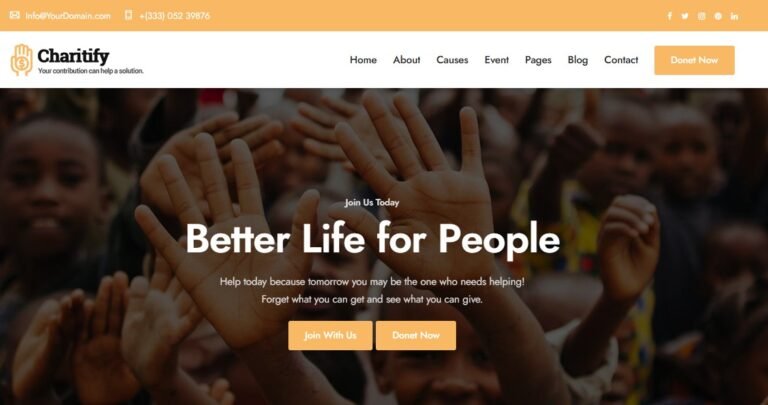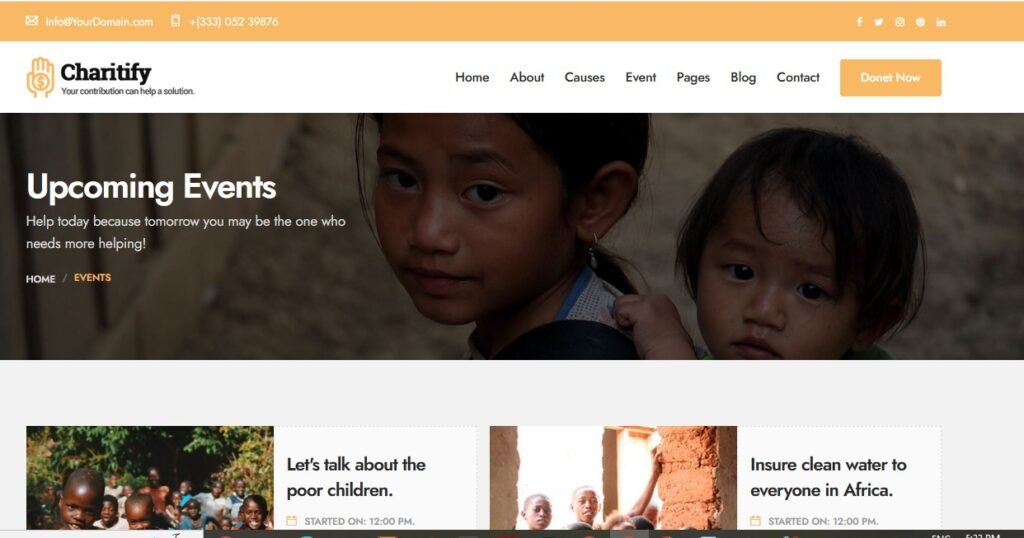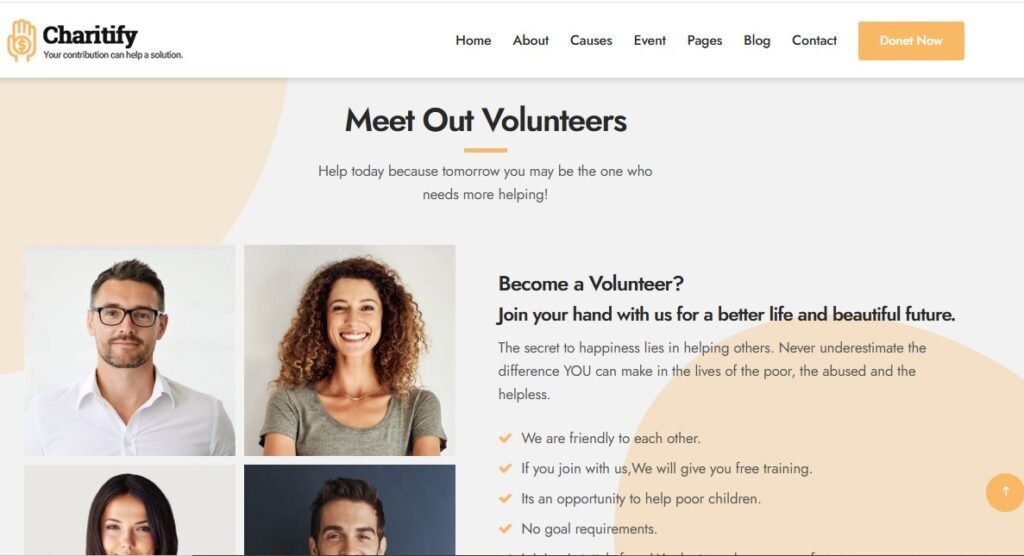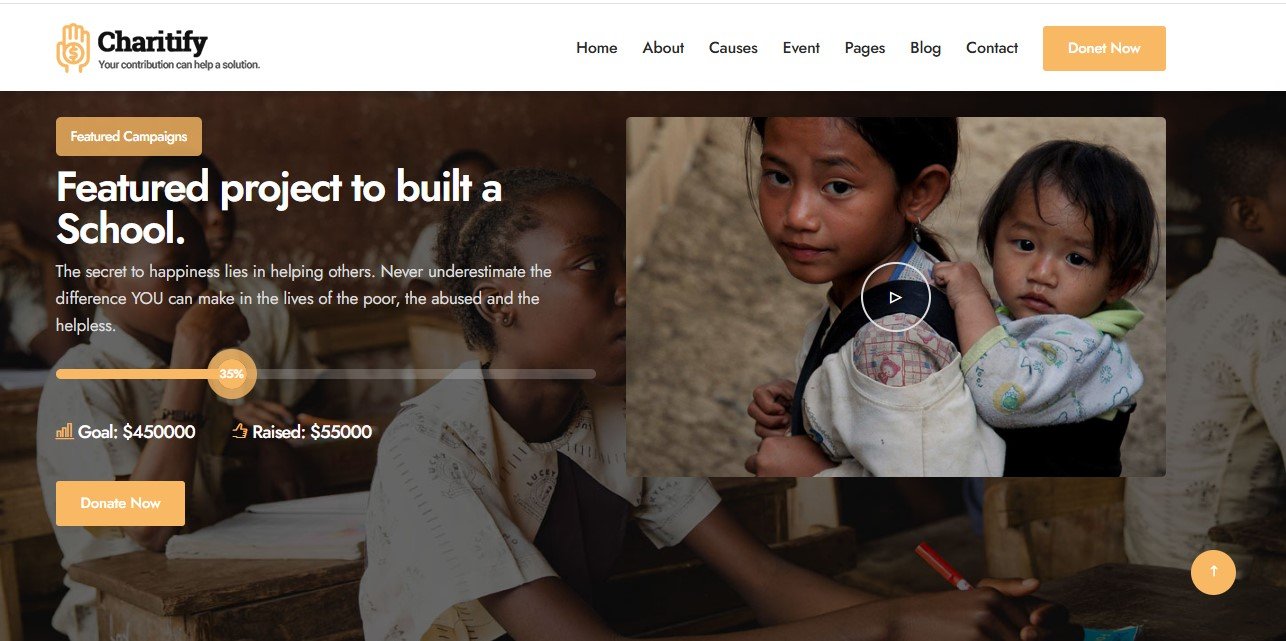Introduction : NGO Website Development
In the digital era, having a strong online presence is essential for every organization — and NGOs are no exception. A well-designed NGO website not only builds credibility but also expands outreach, drives donations, and creates meaningful engagement with supporters globally. The importance of NGOs harnessing the power of the internet is fully understood. This article explores why every NGO needs a website today, how to create one, and what content is crucial for success.
Why Does Every NGO Need a Website?
1. Build Credibility and Trust
A professional NGO website is often the first impression potential donors, volunteers, and partners get. It legitimizes the mission and showcases transparency, which is key to gaining trust.
2. Reach a Global Audience
With a website, an NGO is accessible 24/7 to people worldwide. This extends impact beyond geographical boundaries, enabling global support for the cause.
3. Facilitate Donations and Fundraising
An optimized NGO website provides seamless options for online donations, memberships, and fundraising campaigns. This convenience often translates into higher contributions.
4. Share the Story and Updates
Regular updates about projects, success stories, and events keep supporters engaged and informed. A website is a perfect platform to share multimedia content such as videos and photos.
5. Recruit Volunteers and Partners
An NGO website can attract volunteers and partners by clearly communicating the mission, needs, and how people can get involved.
6. Improve Searchability and Awareness
An SEO-optimized NGO website ensures that the cause appears in search engine results, driving organic traffic and increasing visibility

How to Make an NGO Website
Creating an NGO website may sound technical, but with the right approach, it’s straightforward:
Choose a Domain Name and Hosting :
Pick a domain name that reflects the NGO’s mission or name. Secure reliable hosting for smooth site performance.
Select a Website Platform :
Use platforms like WordPress, Wix, or Squarespace. WordPress is highly recommended for flexibility and SEO optimization.
Design for the Audience :
Focus on a clean, user-friendly layout. Use the NGO’s colors and logos to maintain brand identity.
Integrate Donation Tools :
Use trusted payment gateways like PayPal, Stripe, or dedicated NGO fundraising plugins.
Optimize for Mobile and Speed
Ensure the NGO website is responsive on all devices and loads quickly.
SEO Optimization :
Incorporate relevant keywords such as “NGO,” “website,” and related terms naturally within the content and metadata.
Test and Launch :
Before going live, test all functionalities including forms, donation processes, and navigation.
What Should an NGO Website Contain?
An effective NGO website must have the following key components:
1. Home Page
Clear mission statement, impactful visuals, and calls to action (donate, volunteer, learn more).2. About Us
Information about the NGO’s history, vision, team members, and values.
3. Projects and Impact
Detailed descriptions of ongoing and completed projects with real data and stories.
4. Donation Page
Secure and easy-to-use donation options with transparency about how funds are used.
5. Volunteer and Get Involved
Ways visitors can contribute their time, skills, or resources.
6. News and Blog
Updates, stories, and relevant articles to engage and inform visitors.
7. Contact Information
Clear contact details, social media links, and a contact form.
8. FAQ Section
Answers to common questions to assist visitors quickly (see below for sample FAQs).
Additional Essential Features for Your NGO Website

Events Page
Hosting events—whether fundraisers, awareness campaigns, or volunteer meetups—is vital for NGOs. An Events Page allows promotion of upcoming activities, accepting registrations, and sharing event details. Including a calendar with reminders encourages more participation and engagement.
Payment Gateways
Integrating reliable and secure payment gateways is critical for smooth donation processing. Popular gateways like PayPal, Stripe, Razorpay, and others provide multiple payment options (credit cards, net banking, wallets) ensuring donors have a hassle-free experience. Security features like SSL encryption are a must to protect donor information.
Membership Program & Updation
A Membership Program encourages long-term support from the community. Allow visitors to sign up as members with benefits such as newsletters, event invites, and exclusive updates. The NGO website should make membership sign-up, renewal, and profile updates simple and accessible. Regular content updates keep members engaged and aware of the NGO’s impact.

Explore our portfolio
Conclusion
In 2025, an optimized NGO website is no longer a luxury — it’s a necessity. It amplifies the voice, builds lasting relationships, and fuels mission growth. Whether starting from scratch or upgrading an existing site, working with professionals can make all the difference. That’s where Gracewell Technologies comes in. Specialized in creating powerful, user-friendly, and SEO-optimized websites tailored specifically for NGOs, helping to maximize impact and reach.
Reach out to Gracewell Technologies today and elevate the NGO’s online presence.
Author: Gracewell



